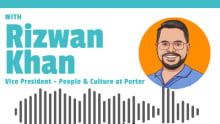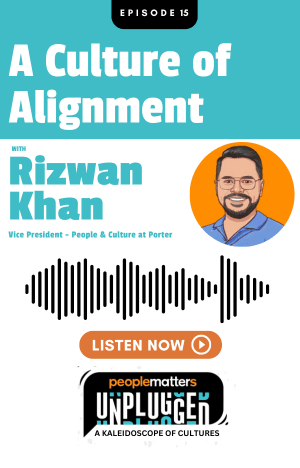Coaching has to be centered around people and their experiences: Everest Engineering’s Craig Brown

Craig Brown is CEO of Everest Engineering. He is a veteran of software product development that has experience leading and managing global software product development teams spanning the globe. He has worked in and with small startups, globally successful product businesses, and leading Australian enterprises. Craig also founded LAST conference, a conference for cross-functional tech industry people hosted around Australia.
In an exclusive interaction with People Matters, Craig shares some wonderful insights on the power coaching holds in elevating performance as well as the importance of team building and empowering your people to find purpose and value in the work they do.
Here are some excerpts from the interview.
With the workplace becoming increasingly digital, what are your thoughts on leveraging HR technology to augment people’s capabilities?
Whenever you are choosing software tools to support your business, it’s vital you think about the problems you are trying to solve first. You need to think about your ideal solution – when looking at HR tech, you need to know what your HR operating model is, independent of software tools.
If you put technology solutions forward first, you will run into constraints built into the tools, and be blind to wider opportunities. You’ll potentially be forced down paths that reduce your performance and competitive edge.
If you are clear about the problems and opportunities you care about, you can develop an operating model independent that targets your idea of what great looks like. Once you have that, you can evaluate software tools in context of your goals. You’ll still face compromises, but you’ll be going in with eyes open.
I can illustrate this with an example. We believe coaching conversations are a critical part of our business. These would typically fall into the manager-employee one-on-one feature in a software tool. In our business, coaching conversations don’t only fall into that type of relationship. Peer-to-peer coaching is equally important as coaching from a manager. We want our team members to choose who they get coaching from, so overtime the coaching relationship may change. In an employee-manager relationship the coaching relationship may remain stable. Often HR tools can often lead conversations in pathways we don’t want to travel, leaving leaders abandoning the features or tools, forcing people to find alternative solutions.
As employee engagement and productivity becomes increasingly critical in driving the business transformation agenda, what are some of the key strategies that leadership must invest in to drive productivity and increased job satisfaction?
In my industry – software product development – as well as in most industries that rely on the intellectual and creative work of people, productivity and impact are directly correlated to how enthusiastic people are about their teams and the work in front of them.
A lot of transformations focus on structures, which are usually broken down as processes, policies and tools. These all provide constraints, which reduce variation, but can also reduce team members' enthusiasm about finding out-of-the box solutions, and also creates bottlenecks throughout the system. Structures, processes and tools matter, but for a transformation that is going to help you thrive in the years ahead, you’re really looking for the things that are going to amplify engagement, enthusiasm, and creativity.
What are the implications of this on transformation strategies? Two conspicuous opportunities are to start improvement initiatives with a clear view of the problem you are trying to solve, and to include the people affected in the decision-making process. It can be hard sometimes to include the whole workforce in decisions that affect everyone. How do you deal with that? You can apply a number of ideas out of the agile community – starting with working in small increments. For example, if you want to test out an organisational-wide HR solution, perhaps pilot it to a few teams, and share the feedback from the teams publicly across the organisation. You could use coaching conversations to help make sense of how the team feels about the changes in the pilot, and also how people outside the pilot are reacting.
Another thing to consider is what motivates people. Motivation mostly comes from within, from how we see the world, from the experiences we have had so far in our lives. If our work is congruent to our experiences, then we can find a story to tell ourselves and when it’s not, coaching can help us find that story and meaning in our work.
When the coach is unable to do so, then a product manager can come in and tell the story of why this is valuable work, figure out measures of performance that add to that value and help employees find that story. Coaching isn’t rhetoric but rather has to do with enabling employees to find that support. It isn’t simply limited to work transitions, it’s also how the employee in question is feeling, whether they believe they are adding value and making an impact, supporting them on their journey to work on themselves. Coaching has to be always centred around the person and their experiences, caring about their story and what their goals and motivations are.
Aligning employee growth to the larger organizational growth goals is a fundamental step for any impactful business growth plan. What can organizations do better in creating this alignment and improving goal clarity among the workforce? All companies have their own mission, they are at different stages of maturity, dealing with markets of varying levels of dynamism, facing their own unique set of competitors and alternatives. Additionally, all organisations have their own internal setup. The structures, processes and methods they are relying on, the people, their abilities and relationships.
We have to understand our environment and abilities if we want to figure out how to change for the future.
There needs to be clarity and congruence about the values, products, processes and elements of the workplace culture. If you don’t have your goals and values aligned, you’ll have confused people wondering what they need to do. People will want to continue to improving things, but they’ll be making guesses and the friction of competing agendas will slow you down.
Perhaps even more importantly is the question of why it is worth our time. Why should we pour our hearts and energy into this? How can we get our messages out there to a workforce that is distributed and working remotely?
One answer is storytelling. Telling stories about your teammates and your customers that reinforce your sense of purpose and the values you admire goes a long way to helping people identify the things they should value at work and the behaviours they should exhibit.
Another approach to constantly ask the big questions: Why this? Why now? How do we know? These will elicit stories as well. They’ll help develop a continuous narrative at the team level about the reasons for the work and the choices being made.
A third and equally important practice is to continually seek feedback from your customers. Data matters, but stories also matter. Bringing stories back from customers about what they love or the challenges they face helps people configure their work in the best possible way to address customer values.
How can productivity measuring tools and technologies be implemented with a more human touch? How can it become more empathetic?
Empathy starts from within the team. We need to understand one another, have purpose about why we are coming together, and if we don’t know how we’re making a difference then we need to stop and ask why.
When we link back the response of the market to the ways in which teamwork is carried out, demonstrating the impact of their work, that becomes a key driver of positive performance. But that requires feedback after work is completed. What we’ve learned is that indicators of engagement and communications are critical along the way because you can’t just wait to see the results to try and inspire positive performance. We have weekly feedback and coaching conversations with all staff, to ensure that our team members can meet their KPIs while being vision-driven leaders, motivated to drive innovative and impactful work. The purpose of the work must be made clear to truly drive team impact.
Your contribution to a team is more important than individual contributions. Leading performance indicators can vary, but trust, communication, building interpersonal relationships and contributing to an aligned mission is important in the workplace.
And measuring that is equally important. How well are people listening to and speaking to their teams? How are they appreciating their people? How much faith do people have in their manager? Those indicators give a much clearer picture of an individual's contributions to the wider team or organisation’s work.
During these unprecedented and turbulent times, what are some words of advice that you would like to share with fellow business leaders on keeping the workforce motivated?
I think it’s important to be authentic about how you’re thinking and feeling. It’s important to take time to listen to people, to respond to the feedback they give, to listen to them tell the story of what the company is doing and where it’s going. When you hear people are feeling burnt out, engage in that conversation and empower the team to find solutions.
Given that we are working so much more remotely these days, it becomes a responsibility for us as leaders and managers in the organization to spend time and energy listening to our people. That means going out of the way to reach your people as individuals and have conversations with them.
We must build that practice so that everyone is checking on each other within the ecosystem and making sure they are doing okay. If you build a pattern of doing that in simple ways, it can be really powerful. It can be as simple as asking if they need help with something. Not a lot of leaders ask these questions. Doing this on a continuous basis, working through small, steady, incremental changes will naturally build the flexibility and capabilities of your people, and lead to transformational change.














